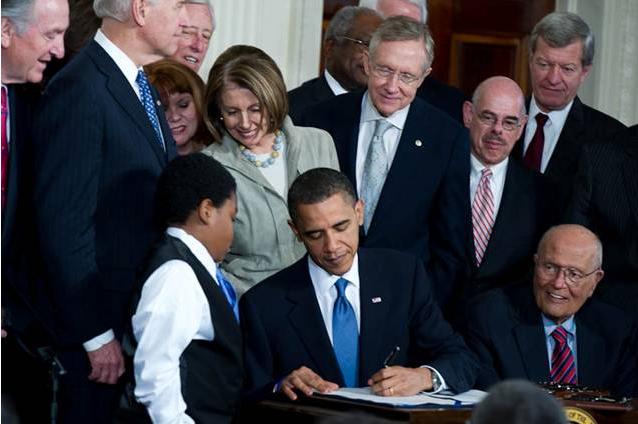
“This is the accelerated benefits rider, this is the waiver of premium clause, and over here we have OH GOD JUST KILL ME NOW”
Now that we’ve gotten Wednesday’s cash grab out of the way, a question that’s puzzled us for years:
How the hell do life insurance agents make money? This ties into one of our Supreme Commandments of Personal Finance (we can’t say “10” because the number changes, and besides it’s probably closer to 3):
Always look at each transaction from the other party’s perspective.
If you’re buying, what does the seller stand to gain from this? Is he (it’s a guy in this example) making enough on the sale to vacation in the Bahamas for a month? Or is he working for The Man, and merely avoiding getting fired for another pay period by getting you to buy a country club membership? In other words, how much wiggle room does he have?
Conversely, how much will the buyer benefit from what you’re selling? Obviously, you’re not going to keep a tally for every single transaction in your life, or you’d never do anything else. Your purchase of a 99¢ Big Gulp® at the 7-Eleven is not a staring contest between Southland Corporation’s predatory pricing and your hard bargaining. But be pragmatic. A) Don’t leave money on the table, and 2) Know when to walk away from a deal, because there will almost always be another one.
Back to our mystery. With no bipedal dependents, we at CYC Headquarters are long past anyone trying to convince us that life insurance is a good investment. But tens of millions of other people do spend money on life insurance, and are convinced that doing so is the only thing preventing their offspring from ending up in an orphanage, in a poorhouse, as a stowaway on a merchant ship, or as part of some other Dickensian relic.
We went to MetLife’s website, plugging in the numbers for a 40-year old male in “great” health (the level between “excellent” and “good”) who doesn’t suck on those filthy disgusting cancer darts. The site prompted us to select a state of residnecy, so we chose the nation’s most populous. A million-dollar, 20-year term policy for a Californian costs $106 a month. The agent gets, say, 15% of that. So, $16. For maybe a couple of hours’ work. Of course, selling life insurance policies isn’t quite like selling Girl Scout (or for our Canadian friends, Girl Guide) cookies: the standard inclination is not to buy, and to avoid the salesperson if possible. Assume a generous lead conversion rate of 10%, and your typical life insurance agent appears to be working for far less than minimum wage. At least recyclable soda can collectors can show up to their daily grind in something significantly more casual than Western business attire.
Except our commission estimates were miles off. A professional connection of ours explains that the scale is anything but uniform. In fact, it goes more like this: 75% in the 1st year, 10% in the 2nd, then 0. Clearly, the agency can afford to be so generous to the agent on the front end because at any given time, only 5% of 20-year policies are in their 1st year. (We used math for that.) Still, average it out over the life of the policy, and the commission structure still seems pretty skinflinty. On the other hand, front-loading it saves all but the lowest-performing rookie agents from starving to death.
A declining commission schedule means that the pressure to sell is never not there. Residuals and royalties are for musicians, not for insurance agents. The idea of selling a policy and enjoying its commission in perpetuity, or at least for the life of the policy, doesn’t exist. While other industries (Wall Street, the military) can afford to bring as many unproven recruits in as possible, allowing for plenty of attrition while a small fraction of those recruits make a long career out of it, life insurance don’t play that way. Hiring fresh college graduates no longer makes economic sense. Rather, the trend is toward hiring established, middle-aged financial professionals with impressive client lists and a penchant for estate planning. Which is probably better for all concerned.
All in all, hawking life insurance still sounds to us like a stupendously difficult way to make a living. Add that to the list of real jobs that we’d rather die than do. Not that anyone reading this was necessarily contemplating becoming an insurance salesperson, but at least we have a better grasp of how an occupation that seemingly makes no financial sense, does. To some extent. Our formula for building wealth remains unaltered: the more sources of passive income you have, the less you’ll have to rely on your own ability to perform the mundane. Monthly rent checks and quarterly dividends beat monthly pittance commissions, at least in our admittedly biased world.




